
Blackthorn in blossom at the Community Woodland, March 2023 (photo: George Ashton)
Trees and Shrubs
Trees and shrubs for wildlife: For advice on which trees and shrubs to plant in your own garden for wildlife, please follow this link to a blog by Natasha Shirley: http://northcurrywildlife.blogspot.com/2018/11/plant-tree-for-wildlife.html
Trees and shrubs at the Community Woodland
By Phil Stone
The Community Woodland was planted in the spring of 2009 by a team of volunteers with about 25 species of native trees and shrubs, and other species have been added since then (not all exclusively native). They were selected to give a broad range of colour, habit, leaf shape and to attract a wide variety of insects. The underlying theme is oak with an understorey of hazel.

The woodland area is left largely undisturbed to benefit wildlife but with selective cutting of nettles, brambles and thistles to prevent them becoming dominant. Some ground vegetation is being introduced such as wild garlic, woodrush and bluebells.
There is also a small orchard with a variety of eating, cooking and cider apples, plums and pears. An area of hazel and walnuts completes the fruit and nut section.
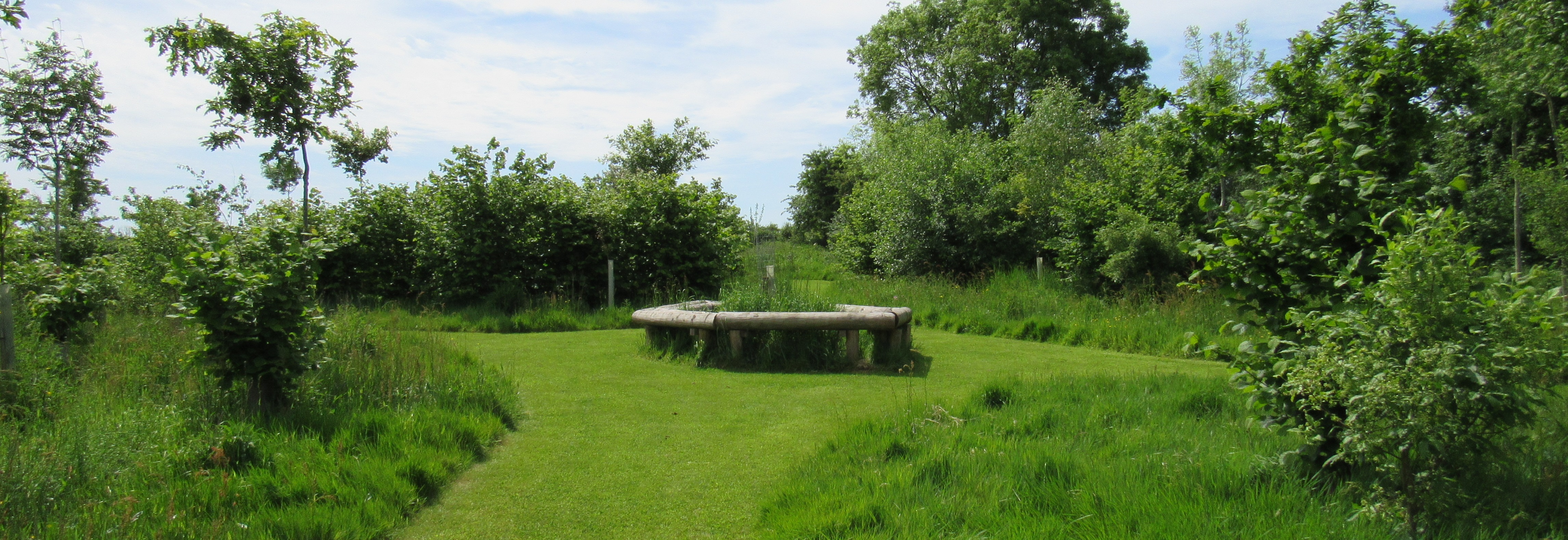
Tree species include: Alder, Ash, Birch, Black poplar, Cherry, Field maple, Larch, Lime, Mountain ash (Rowan), Oak, Scots Pine, Whitebeam.
Shrub species include: Alder buckthorn, Buddleia, Cotoneaster, Dog rose, Dogwood, Guelder rose, Goat willow, Hawthorn, Holly, Privet, Snowberry, Spindle, Wayfaring tree.
Fruit and nut species: Apple, Crab apple, Hazel/cobnut, Pear, Plum, Walnut.
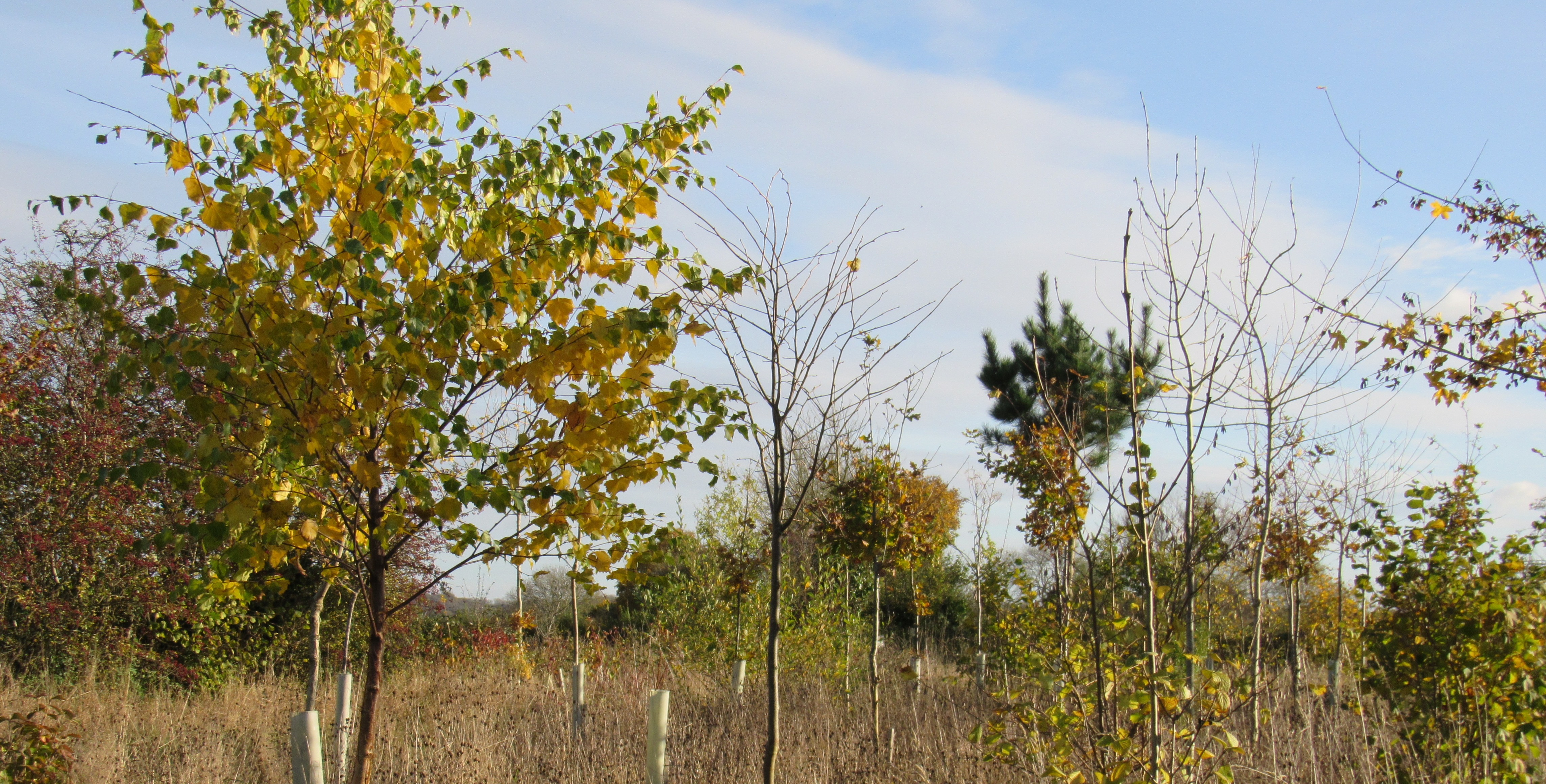
THE WOODLAND THROUGH THE SEASONS
SPRING
April is the time when some trees and shrubs start to come to life. Hazels have been exhibiting their yellow catkins over the whole winter period, seemingly taking it in turns to flower before turning brown and then waiting for the leaves to appear.
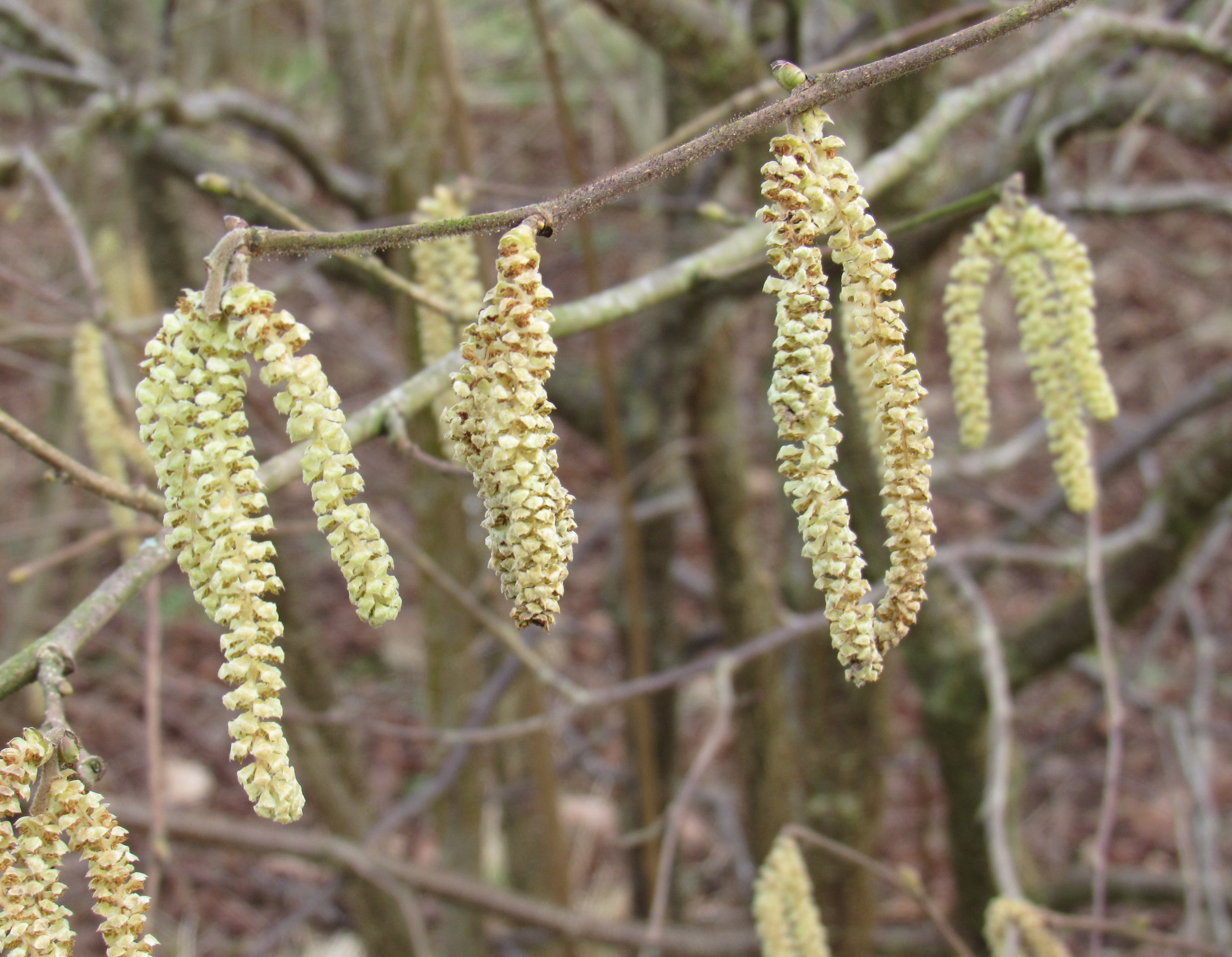
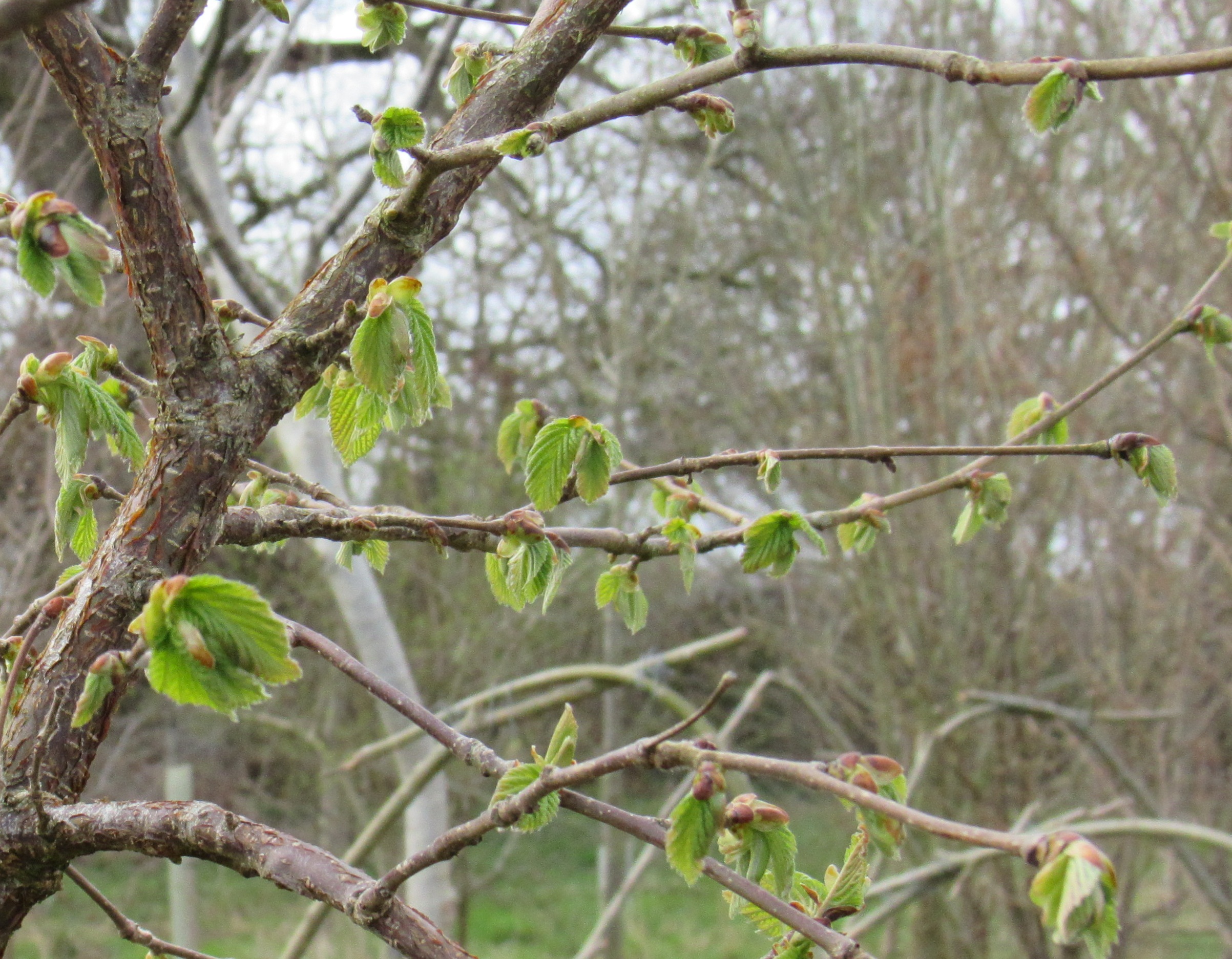
Hazel catkins (top) and new hazel leaves beginning to appear (above)
Pussy’ willows showing their white, furry catkins are a sure sign that spring is coming, gradually turning yellow at the pollen stage. Some of these Goat willows can be seen around the base of the willow arch.
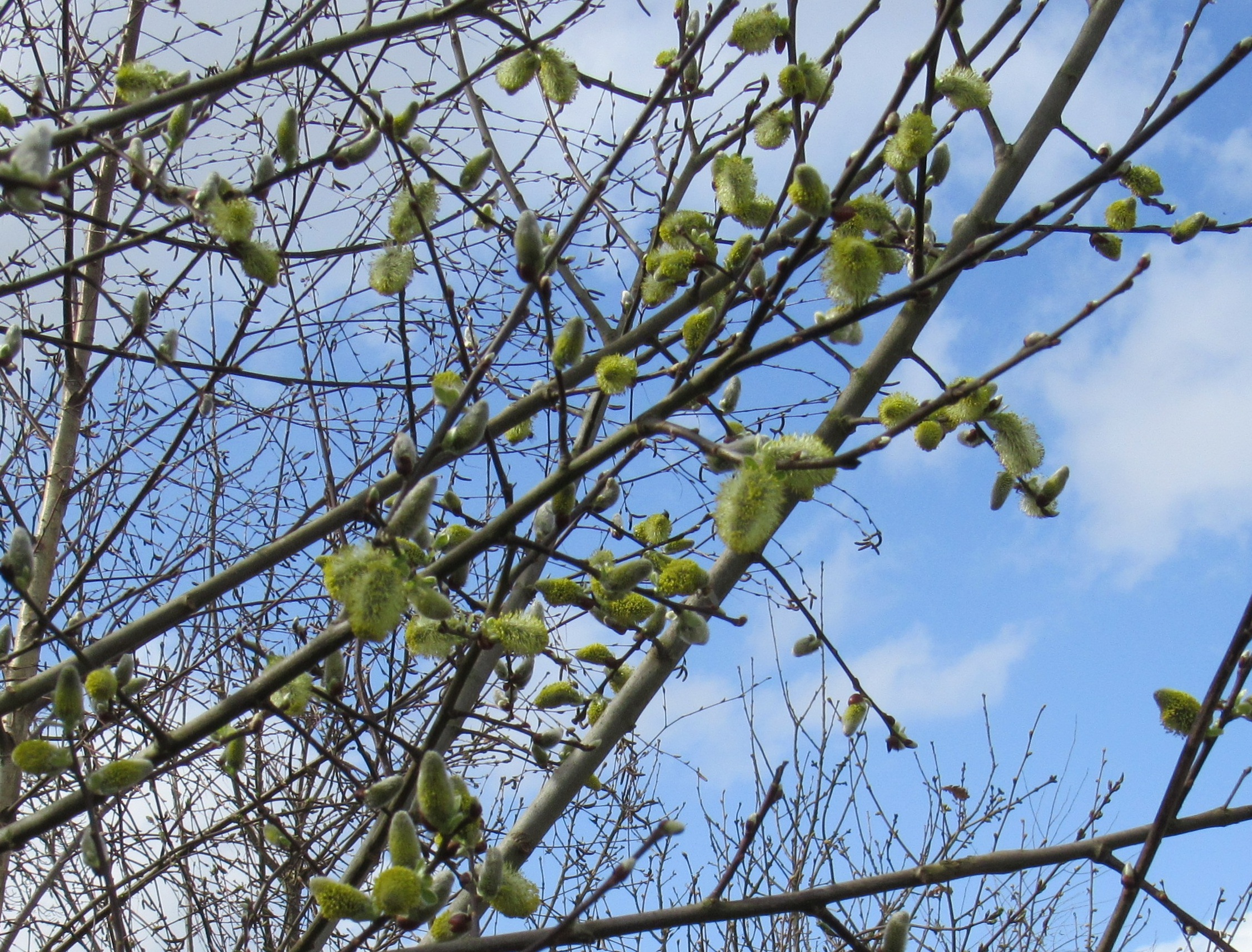
'Pussy' willow catkins turning yellow with pollen
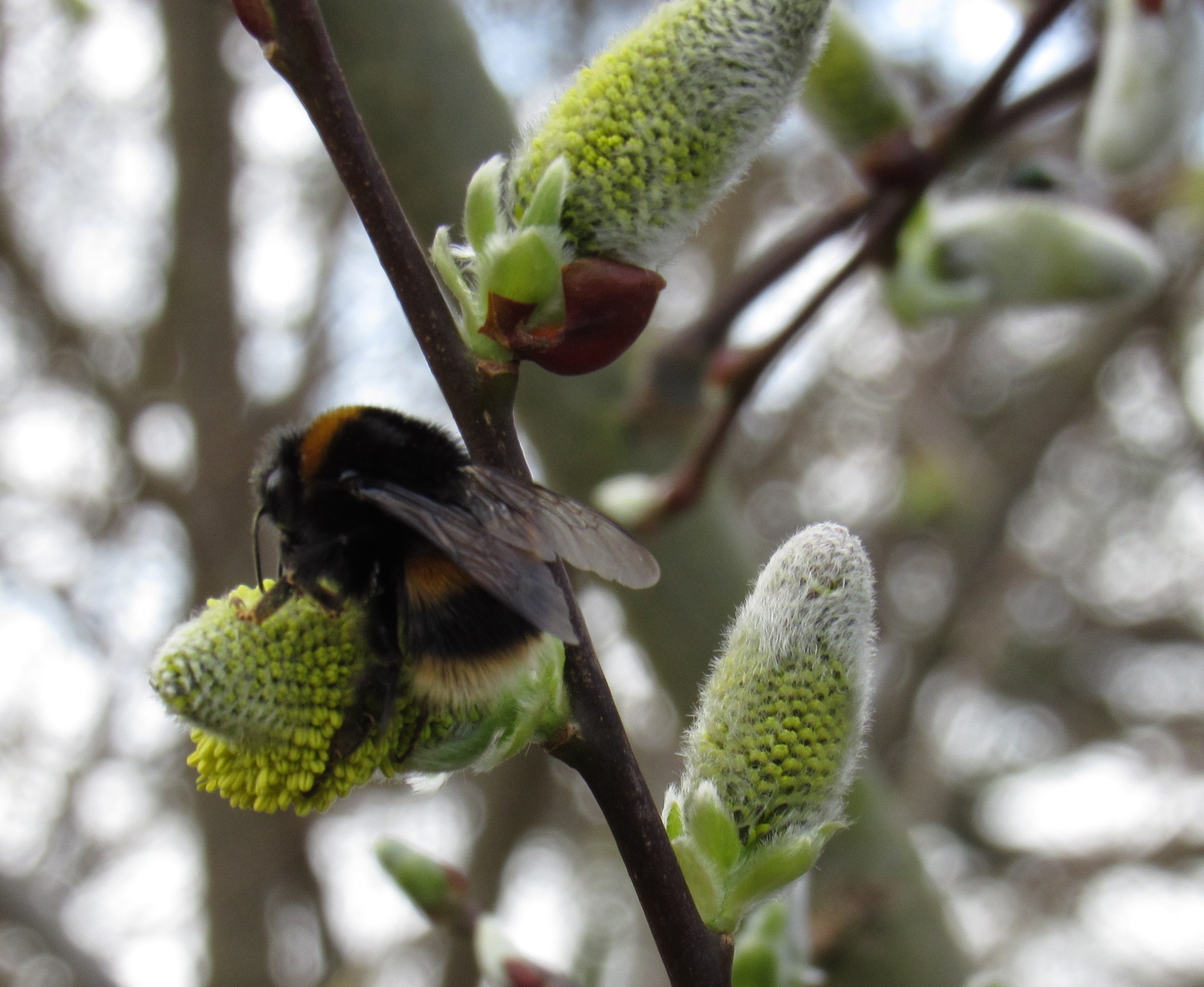
Bumblebees find 'pussy' willow a useful early source of pollen
The earliest signs of shoots unfolding and leaves which are about to appear are shown by Spindle and Guelder Rose which seem to swell visibly on each warm day.
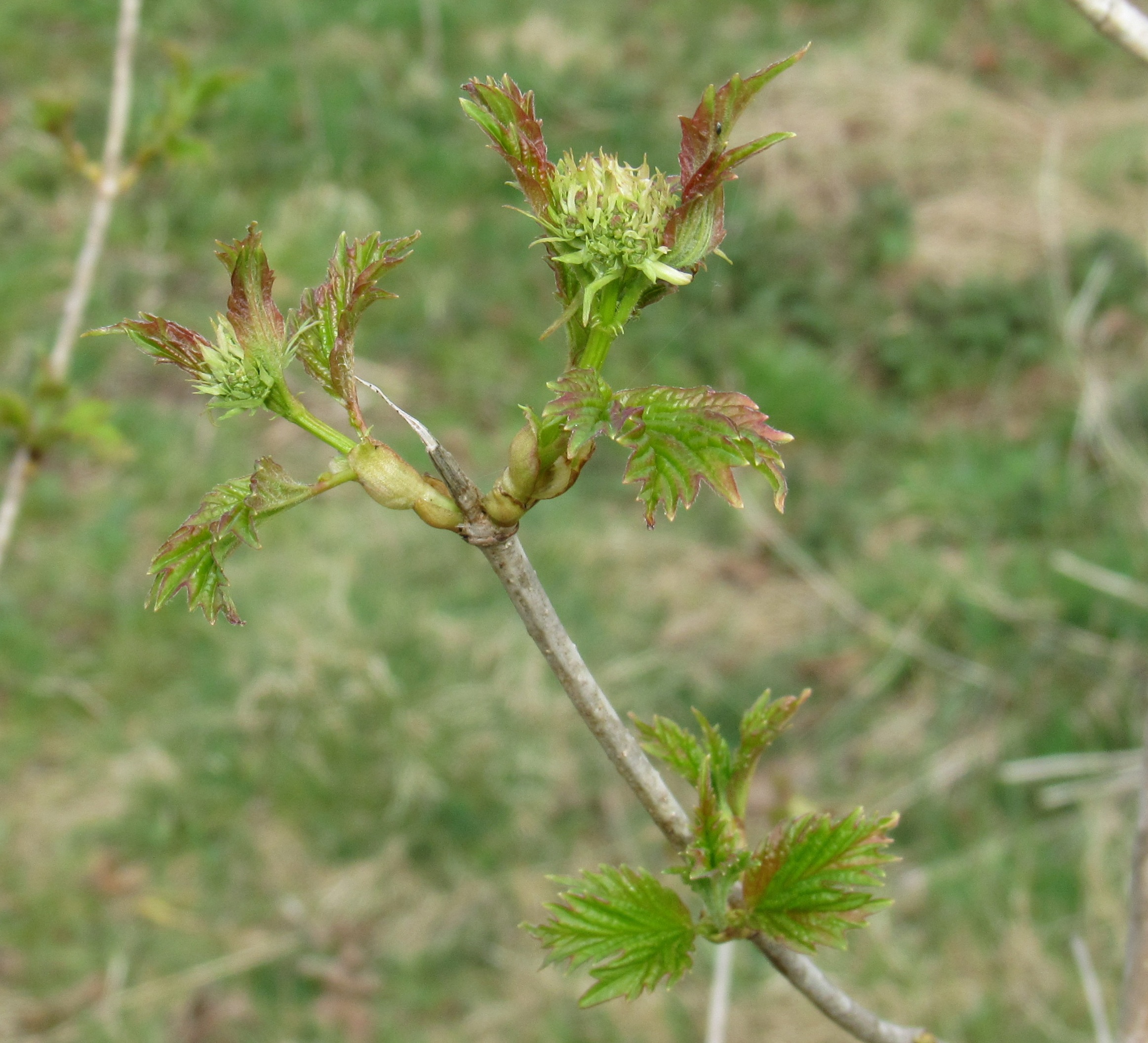
Guelder Rose showing early signs of growth.
Another month and most of the native species in the woodland will be coming into life and spring will be truly with us.
MAY: Just to confuse you!
Text and photos by Liz Gibbs
These three shrubby plants are in flower in May. They are far from showy and far from exotic, but all three have their merits.
Alder buckthorn (Rhamnus alnus)
You can just about see the tiny five-pointed, star-shaped flowers which are a creamy green in colour. But you will easily see lots of bumble bees who cannot get enough of the nectar! The leaves are also food for the early flying yellow Brimstone butterflies. Less attractively, buckthorn was once used as a purgative.
Spindle (Euonymus europaeus)
Again, a tiny cream-coloured flower with four petals; again, insect although not bee pollinated. In autumn, the seed pods are a bright pink with a glowing orange (poisonous) seed inside. In the past, the hard wood was shaped and pointed to make spindles for spinning wool, hence the name.
Dogwood (Cornus europaeus)
Here, the tiny white four-petalled flowers make a cluster so are much easier to see. Black berries follow in the autumn. The leaves colour to golden yellow in autumn and the stems are often bright red and really show up in winter. The straight woody stems were used as arrow shafts in prehistoric times.
INDIVIDUAL SPECIES
Text and photos by Phil Stone
Some information and photos of several individual tree and shrub species to be seen at the Community Woodland are given below. For more details about British trees, see The Woodland Trust's website: www.woodlandtrust.org.uk/visiting-woods/trees-woods-and-wildlife/british-trees/
The Wayfaring Tree
The Wayfaring tree (Viburnum lantana) is actually a native shrub. Flowers are out in late April: creamy white in dense cymes. Berries, later in the year, start green, turn red and finally become black at maturity.
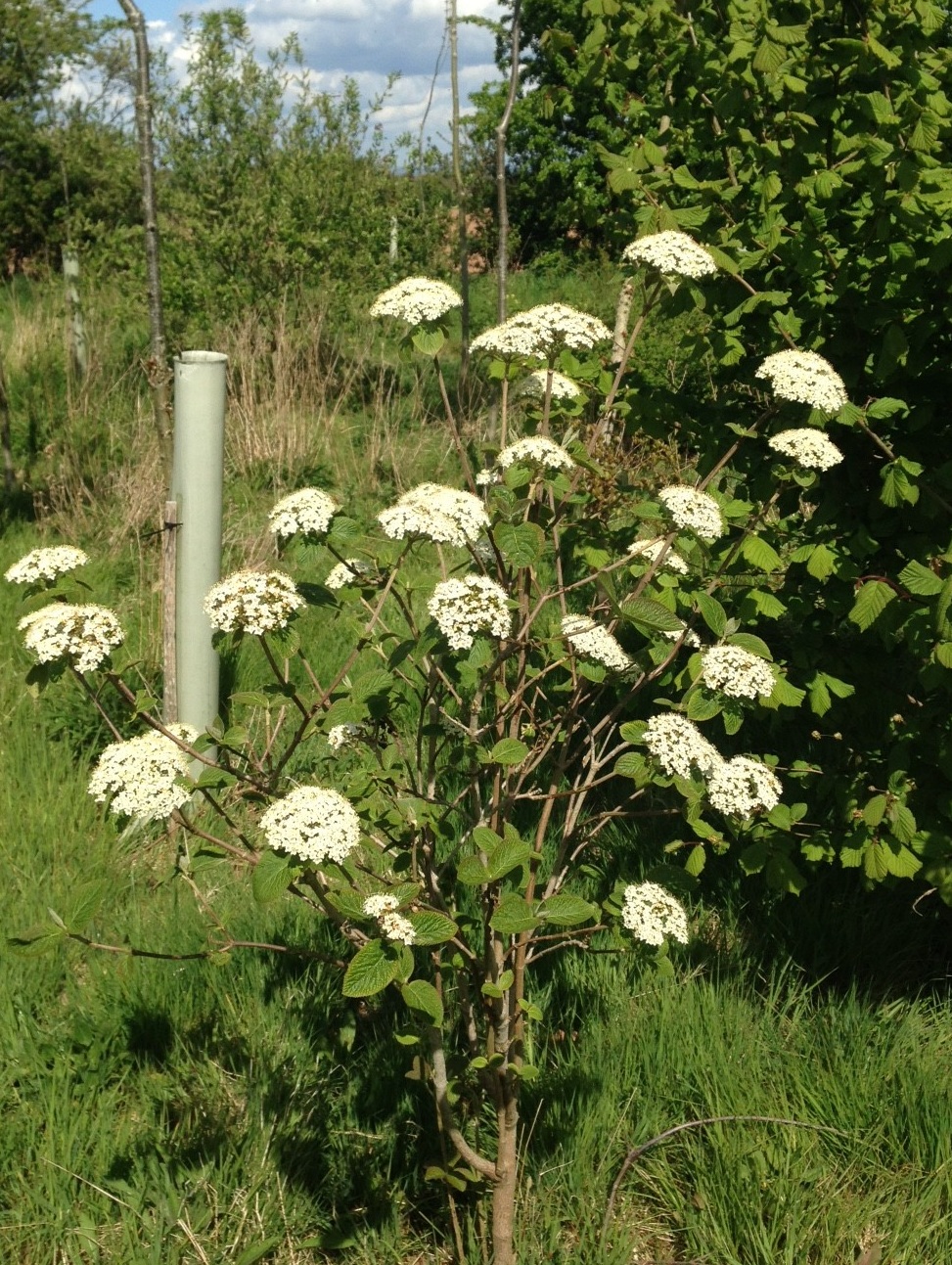
Guelder Rose
Viburnum opulus is Guelder rose. Its glaucous, bright red berries are food for birds, such as the Mistle Thrush and Bullfinch, once the creamy bunches of flowers are over. Guelder rose is susceptible to the Viburnum beetle which can eat so much of the leaves that only the leaf ribs are left, looking like a spider’s web, but most bushes survive to leaf again the following year.
Crab Apple
There is a lot of fruit on this crab apple (?Malus baccata).
Crab apples are often planted on the edge of orchards as they attract bees which then pollinate the orchard fruit trees. The crab apple is very bitter so it is not popular as an apple, but it can be used to make jelly.
Common Dogwood
Cornus sanguinea is Common Dogwood. It is hermaphrodite, with creamy white male and female flowers found on the same plant. One traditional name is Winter fire in view of its autumn colour as shown in the picture. It was traditionally used for butchers’ skewers and even arrows in view of its straight stems.
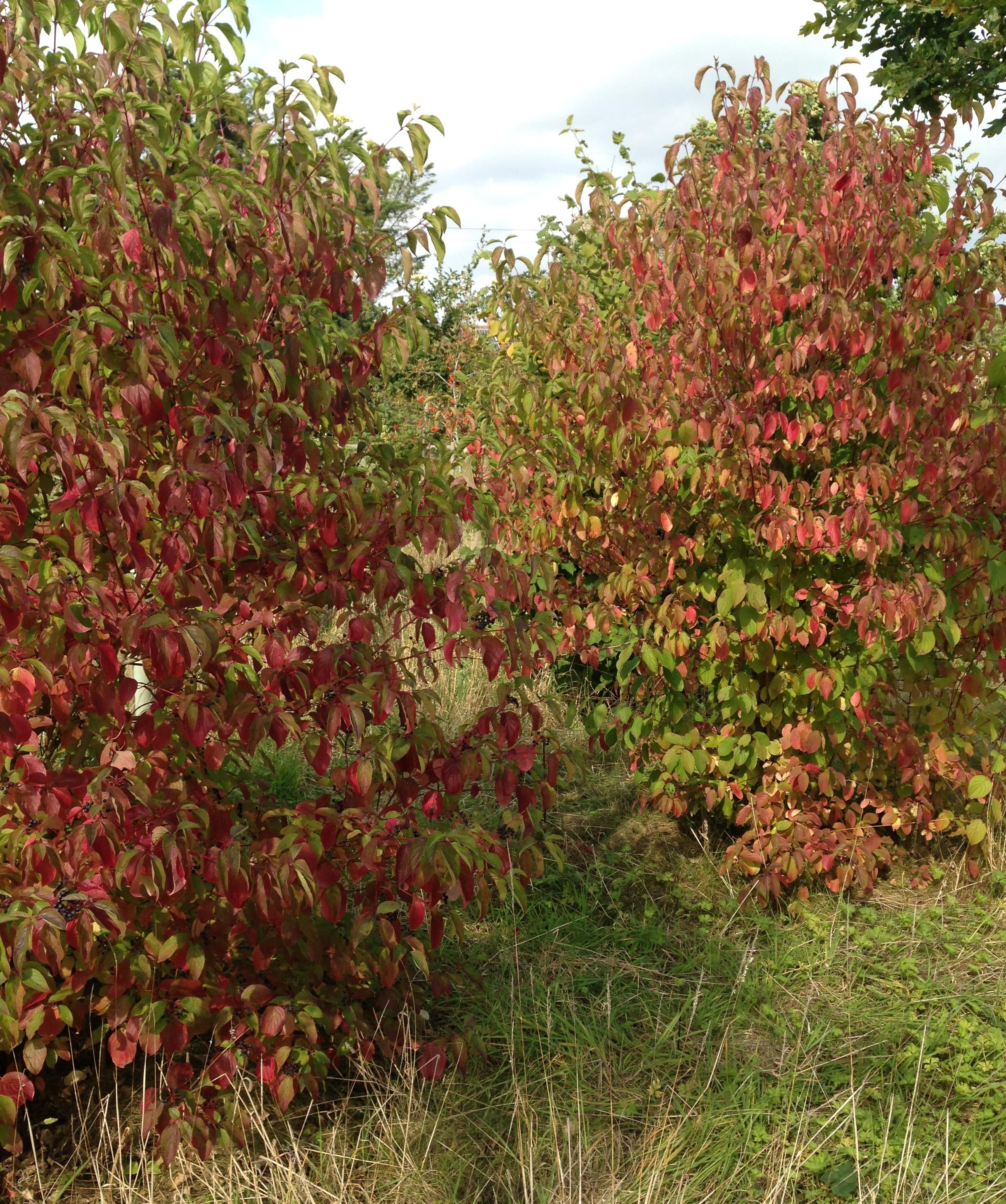
Field Maple
Field maple (Acer campestre) is Britain’s only native maple, although there are many other related varieties here such as Norway maple, Japanese maple and Canadian maple, the latter famous for maple syrup.
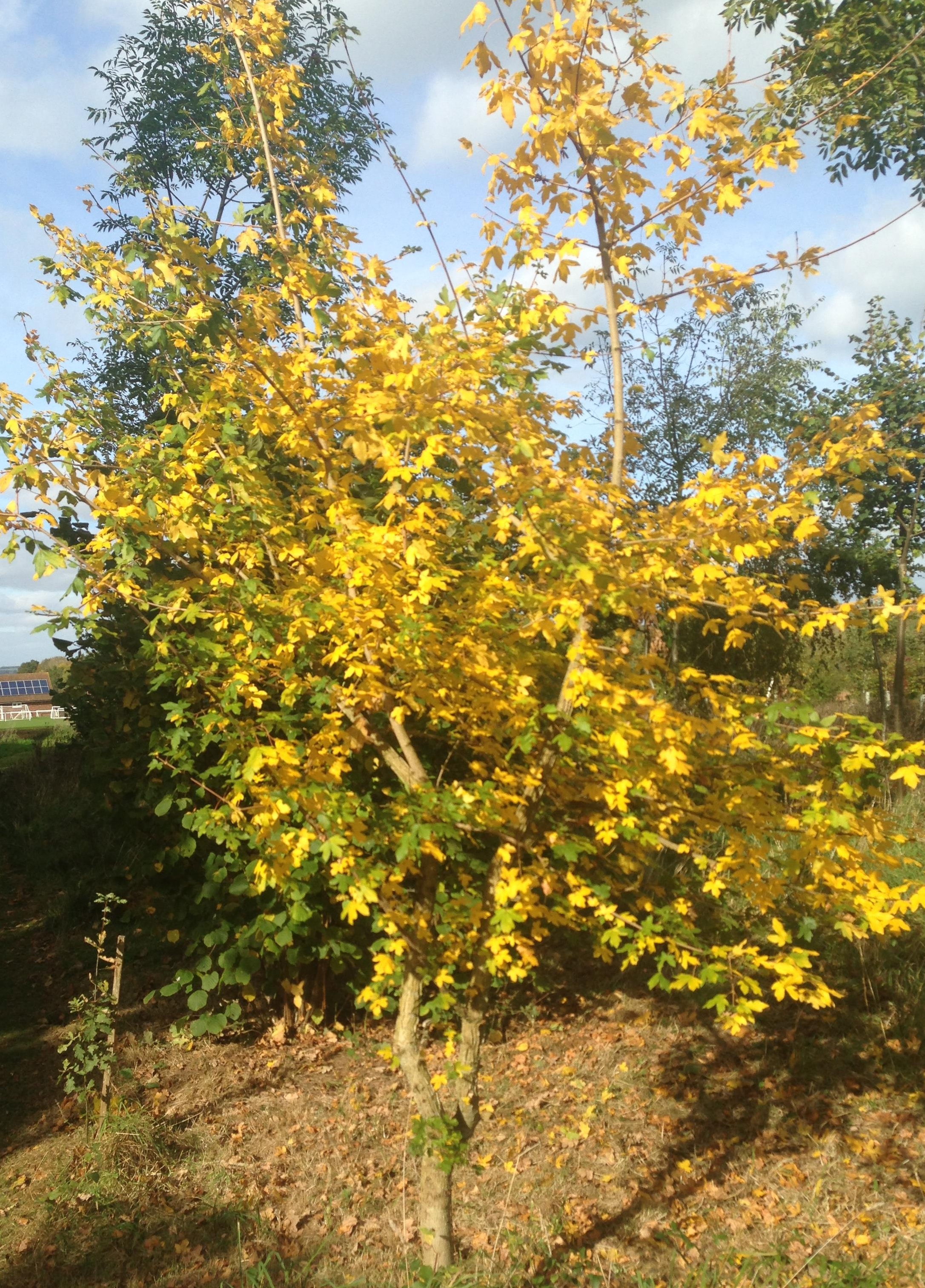
Field maple is conspicuous for its bright yellow leaf colour which suddenly appears in our hedgerows in autumn. It is a small tree with a compact habit, but is relatively fast growing and is a useful tree for roadside verges.
Bird Cherry
Bird cherry (Prunus padus) is a native, but not common tree, especially in the south-west. It has lovely white flowers with five petals which appear in April and are very fragrant, attracting nectar-loving insects. It can grow to 25 metres. The black fruits are eaten by Blackbirds and Song thrushes and its leaves are food for many moth species, including the Brimstone moth.
